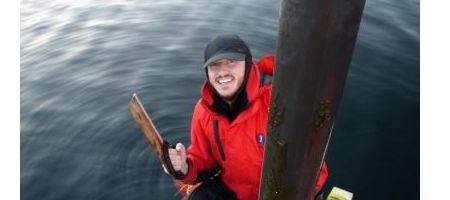University of Massachusetts Amherst geoscientists have used a biomarker from human feces to establish the first human presence, the arrival of grazing animals and human population dynamics in the Arctic Circle.

“The prehistoric settlers and their livestock pooped and their feces washed into the lake, which over time left a record of trace amounts of specific molecules that are only produced in the intestines of higher mammals,” says doctoral student Robert D’Anjou.
“When you find these molecules at certain concentrations and in specific ratios, it provides an unmistakable indicator that people were living in the area.”
The team was working just north of the Arctic Circle, at Lake Liland in the Lofoten Islands in northern Norway, where humans were thought to have lived in prehistoric settlements from the early Iron Age through the Viking period.
They took two sediment cores from the lake bottom and used radiocarbon measurements and the presence of volcanic ash from Iceland to establish their chronology, extending back roughly 7,000 years.
They extracted the compound coprostanol, a molecular marker formed from the digestion of cholesterol in the human gut, plus other sterols from other mammals to estimate the presence of sheep and cattle.
From these, they were able to produce a long-term record of the presence and relative population size of humans extending back over thousands of years at the site.
Along with vegetation changes and fire records, they say, the data clearly defines a pre-settlement period with no detectable human activity in the lake’s water catchment area from about 7,300 to 2,250 years ago.
At that point, however, changes in the background state appear in the record, marking an “abrupt shift” to significantly increased levels of pyrolytic PAH first, followed by increased human fecal material. This likely indicates that as people moved in, they first cleared the land by burning before establishing a permanent settlement, the researchers say.
There was then a lull in human activity from about 2,040 to 1,900 years ago. After this, the human and livestock populations steadily increased to a local maximum around the year 500, based on the fecal record, then fell again to a second minimum around the year 850.
Overall, the authors say, the new fecal markers are likely to prove valuable in many other places, to distinguish natural from human factors that influenced the environment in the past.






